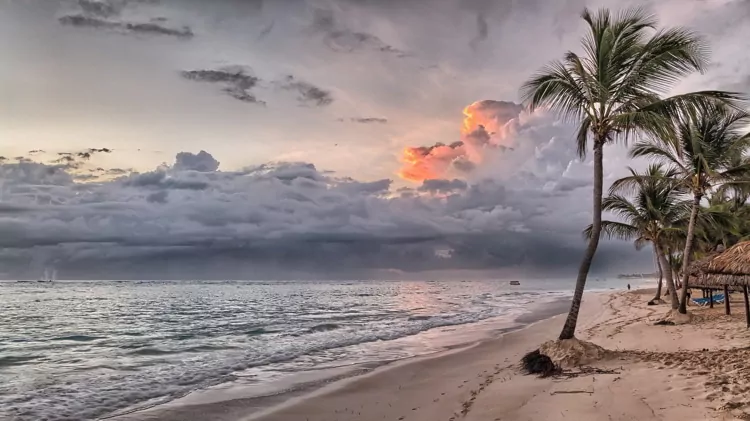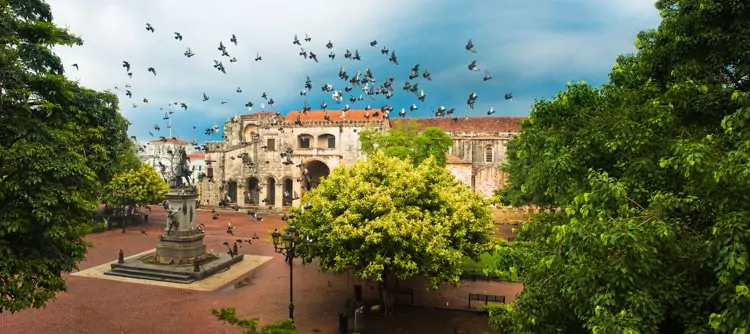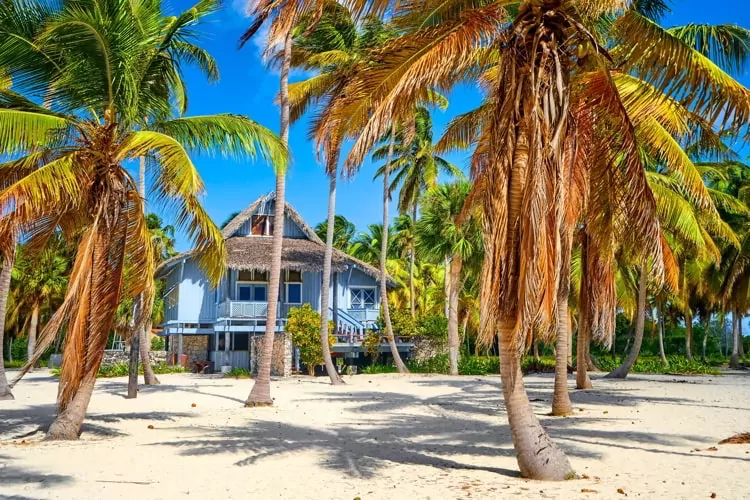
3 Solid Reasons To Start Investing In The Dominican Republic
This Is My “A” Game
The Dominican Republic first came onto my radar in 2005. It was the country’s undervalued beachfront property that got my attention back then.
I was among the first to shine the light on the DR for American property investors, but its miles and miles of soft-sand beaches had been attracting foreign tourists and European investors for decades before that. The French, especially, have been moving to and investing in the Dominican Republic for generations.
Today I want to focus your attention on the Dominican Republic in a bigger-picture way.
Now that I’ve gotten to know it as well as I have, I believe this island nation is as close to perfect as an offshore destination gets. It checks nearly every box on my list.
I’d go so far as to describe it as the world’s best offshore haven.
Why The Dominican Republic?
The Dominican Republic’s economy has been the fastest-growing in Latin America and the Caribbean in recent years. From 2010 to 2019, the economy grew an annual average of 5.8%.
As with most countries, the global pandemic took a toll on the economy of the DR, so growth slowed through 2020. Thanks to the return of tourism, a boost of remittances from the booming U.S. economy, and an increase in foreign investment, the economy quickly gained track in 2021 and is set to flourish in coming years.
Much of the expansion the country has been enjoying is thanks to millions of tourist dollars from North American and European travelers flocking to those sandy beaches I mentioned earlier in ever-growing numbers.
Alongside economic growth, the government has prioritized education, sponsoring literacy and vocational training programs for adults and building thousands of new schools in recent years.
“The current administration is working hard to get this country beyond developing–world status,” one local businessman recently told me.
The country’s infrastructure has improved dramatically since my first visit. Today new highways connect most of the resort and beach areas. The colonial zone in Santo Domingo is enjoying a facelift. New roads and sidewalks are being built, and utility cables are being buried underground.

Santo Domingo
Increased flights from the United States make the island more accessible, and major international hotel chains are targeting the DR, specifically Santo Domingo, for new properties. Recently established hotels such as InterContinental, the Hard Rock Hotel, and a Homewood Suites by Hilton have become popular destinations for international tourists.
The DR sees about 7 million tourists per year,; most coming from North America. The country’s administration is trying to attract more Chinese tourists and plans on expanding its reach to visitors from all over the world in the coming years.
Beyond tourism, the DR economy relies on agriculture (bananas, coffee, and cocoa) and mining.
That’s the country’s big picture.
How Does The DR Stack Up As An Offshore Haven Specifically?
How does the DR stack up as an offshore haven specifically? It’s a top-tier choice for these flag-planting activities in particular:
- Residency: A
- Citizenship: A
- Investing: A
- Taxation: A
- Banking: B+
The reasons to target the Dominican Republic for residency (either as a backup or because you’d like to live in the country) and alternative citizenship are compelling. This country offers some of the easiest and cheapest residency options available anywhere in the world.

This could be your second home
Generally speaking, wherever you decide to settle in the world, gaining second citizenship takes time and/or money.
The cost of economic citizenship from Dominica (not to be confused with the Dominican Republic), for example, will run you a minimum of US$100,000 plus fees for an individual and at least US$175,000 plus fees for a couple.
Furthermore, Dominica is a budget choice. Economic citizenship options in other countries can be significantly more costly.
If you don’t have or aren’t willing to spend the money to purchase second citizenship, you will have to put in the time. Most countries require at least five years as a legal resident before you become eligible for naturalization.
The Dominican Republic requires only three years of residency… and that can be fast-tracked.
Dominican Republic Residency Options
The Dominican Republic offers ordinary and fast-track residency options. The fast-track options include residency through investment and a program for retirees who can prove US$1,500 a month in pension income or US$2,000 from investment-derived income.
Obtain residency under a fast-track option, and your naturalization process can also be fast-tracked. You can start the application process for citizenship after just six months of residency rather than waiting the standard three years. This means that you can complete the naturalization process in 12 to 18 months from the time you obtain your residency. The speed of residency processing is continuously improving, as more staff are added to the department.
You can’t count on this in every case, but it can be possible to have your residency card in as little as 45 days.
The invest-for-residency option requires an investment of US$200,000. However, unlike economic citizenship options in other countries where the “investment” is in fact, a donation to a local development fund, in the DR, you can choose to invest in real estate, a local business, or local financial instruments. Keep your US$200,000… plus associated investment profits.
The regulations, requirements, and opportunities associated with qualifying for residency and a passport in the Dominican Republic are changing in real-time as the government works aggressively to attract more foreign investment, more expats, and more retirees interested in living in the country.
Bottom line, this playing field is continually changing for the better.
I’ve often written over the past few years about real estate investment opportunities in this country. I am as bullish as ever on property markets in the DR in general and in specific target regions in particular. I have been researching and scouting and intend to make a significant investment in property here.
As with every country in the world, taxes in the Dominican Republic are complex. For your first three years of residency, you will be taxed only on what you earn in the DR. After three years, you will be taxed on foreign investment income. Non-residents are taxed on any income earned in the country.
However, the taxation system is flexible and few people actually pay tax. The minimum you have to earn to be taxed within the country is 416,220 Dominican pesos a year or a monthly salary of 34,685 Dominican pesos. Click here for currency conversions at today’s exchange. The rate is 15% on any amount of income over the above amounts, and if it goes up to US$13,000 a year, you pay 20% on any amount over that.
Capital gains are taxed as regular income. The corporate tax rate is 27%, but, like individuals, DR companies are taxed only on income earned in the country.
The Dominican Republic has fewer banks and more limited private and investment banking options than the States. However, DR banks are more open to working with foreign (including American) clients.
In addition, DR banks will lend to foreigners for the purchase of real estate.
Lief Simon



